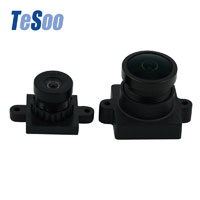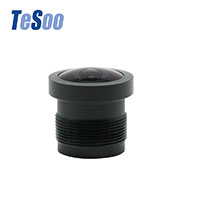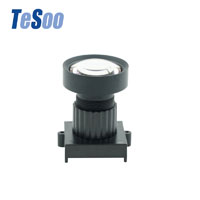Analysis of the
As an important component of ADAS sensors, in-vehicle cameras are experiencing rapid growth in the overall market. When it comes to in-vehicle cameras, everyone's attention may be more on the big problem of shortage of CMOS sensors and chip semiconductors in the current industry chain. But in terms of production details, there is less chat. Today we will discuss with you one of the details, the rigid requirements of the front loading factory: "Automotive Grade" vehicle lens products.
Generally speaking, "Automotive Grade" is synonymous with quality, meaning strict product performance. This is because in the application of various products, automotive products will encounter various extreme environments, for example, the ultra-high temperature generated by sunlight exposure in summer and the ultra-low temperature of minus tens of degrees below zero in the north in winter, rain and high-pressure car wash damage. In addition, car safety involves the life safety of drivers and passengers. Therefore, the "Automotive Grade" must ensure that products can be used normally in these extreme environments. As one of the most professional automotive lens manufacturers, we'd like to share some information about the automotive grade car lens.
Ⅰ. Basic requirements for "Automotive Grade" car lens
For in-vehicle camera products, the basic Automotive Grade generally includes the following seven aspects:
1. Temperature resistance: It needs to work normally in the range of -40℃~85℃, and can adapt to the drastic changes in temperature;
2. Anti-vibration: The vehicle will generate strong vibration when driving on a less flat road, so it must be able to resist various intensities of vibration;
3. Anti-magnetic: When the vehicle starts, it will generate extremely high electromagnetic pulse, which requires extremely high anti-magnetic performance;
4. Waterproof: The car lens must be sealed very tightly, and it can still be used normally after being soaked in rain for several days;
5. Service life: The service life is at least 8~10 years to meet the requirements;
6. High dynamics: The vehicle travels at a fast speed, and the light environment facing the camera changes drastically and frequently, so the CMOS of the camera is required to have high dynamic characteristics;
7. Low noise: It can effectively suppress noise when the light is low, especially the side view and rear view cameras are required to capture images clearly even at night.
The above are only general requirements. For different application environments, there will be more detailed requirements. For example, the surround view requires an ultra-wide angle, which is generally at least 135°. It is understood that 210° also has applications.
Ⅱ. "Automotive Grade" camera lenses for different application positions
As the core optical component of the camera, the car lens, in addition to the basic requirements of tolerance to extremely cold and extremely hot environments, service life, waterproof and dustproof, etc., the optical performance of the camera lens in different positions will have certain differences.
Below, we talk about the lens characteristics of different products from the front view (ADAS), rear view, surround view and inner view (gesture recognition, facial recognition, etc.) and smart electronic mirrors.
1. Front view (including ADAS, autonomous driving sensors)
The lens front-view is mainly used in lane departure warning, intelligent high beam control, forward collision warning, speeding warning, ACC cruise and other scenarios.
Its optical requirements are:
(1) Continuous and stable focusing characteristics and thermal compensation characteristics, which can maintain stability under different temperature conditions;
(2) High-pass light characteristics to ensure good imaging effects under low lighting conditions;
(3) Clear imaging effect, which can effectively capture and distinguish the details of objects;
(4) Stray light and ghost image control should be able to improve frontal glare interference such as headlights.
2. Rear view/Look around
Rear view sensors are used in scenarios such as parking assistance and automatic parking. The surround view lens expands the field of view on the basis of the rear view camera lens, and can present the complete body environment and do some simple identification.
The rear-view sensor and the surround-view sensor have similar requirements for lens characteristics, which can be roughly divided into the following points:
(1) High requirements for waterproof performance;
(2) Excellent temperature characteristics to ensure high definition effect;
(3) Optical distortion correction to provide a more realistic real scene.
3. Introspection
Endoscopic sensors can be used in gesture recognition, human-computer interaction, and facial expression recognition (fatigue monitoring) and other scenarios.
Therefore, the inner vision sensor lens involves the problem of different wavelength bands. For different identifications, the wavelength band selection is different, and certain light needs to be filtered out.
4. Smart electronic mirror
Smart electronic mirrors are divided into smart electronic rearview mirrors (FDM) and smart exterior rearview mirrors (CMS). The field of view of smart electronic rearview mirrors is three times that of traditional rearview mirrors. Today, worldwide, the policy of cameras replacing vehicle exterior mirrors is advancing.
The requirements for the lens of the intelligent electronic rearview mirror are:
(1) It is necessary to improve the ghost stray light caused by the illumination of the headlights;
(2) The overall resolution of the picture should be uniform.
Popular Camera Lens
Hot Camera Lens Articles

 English
English 

